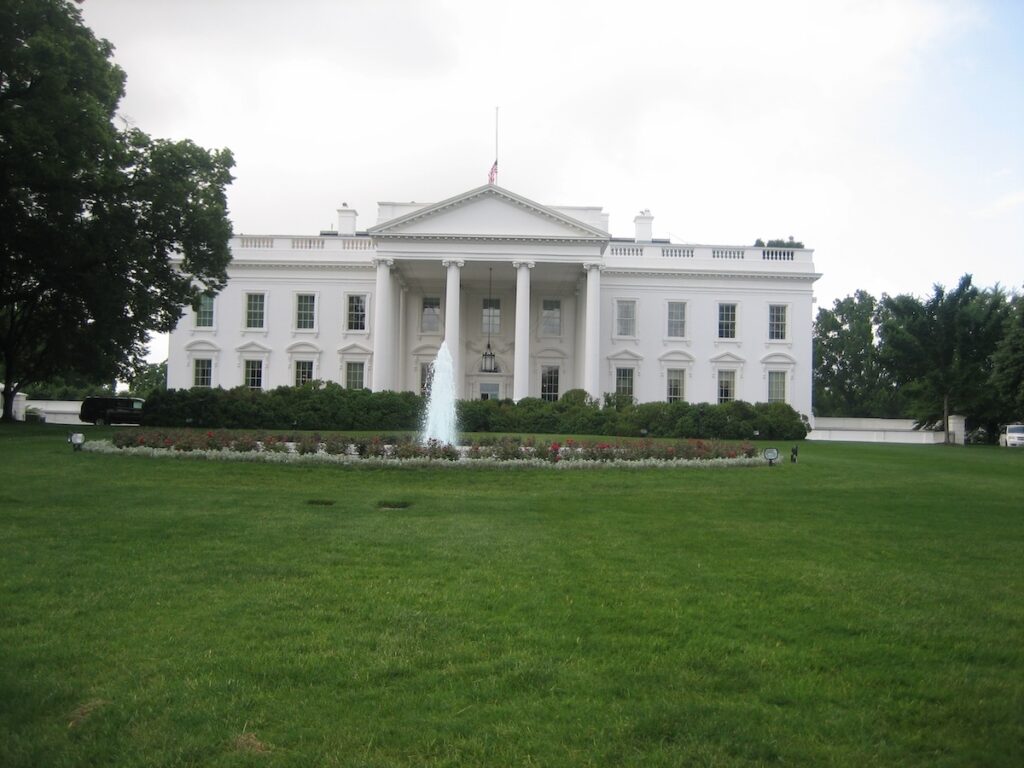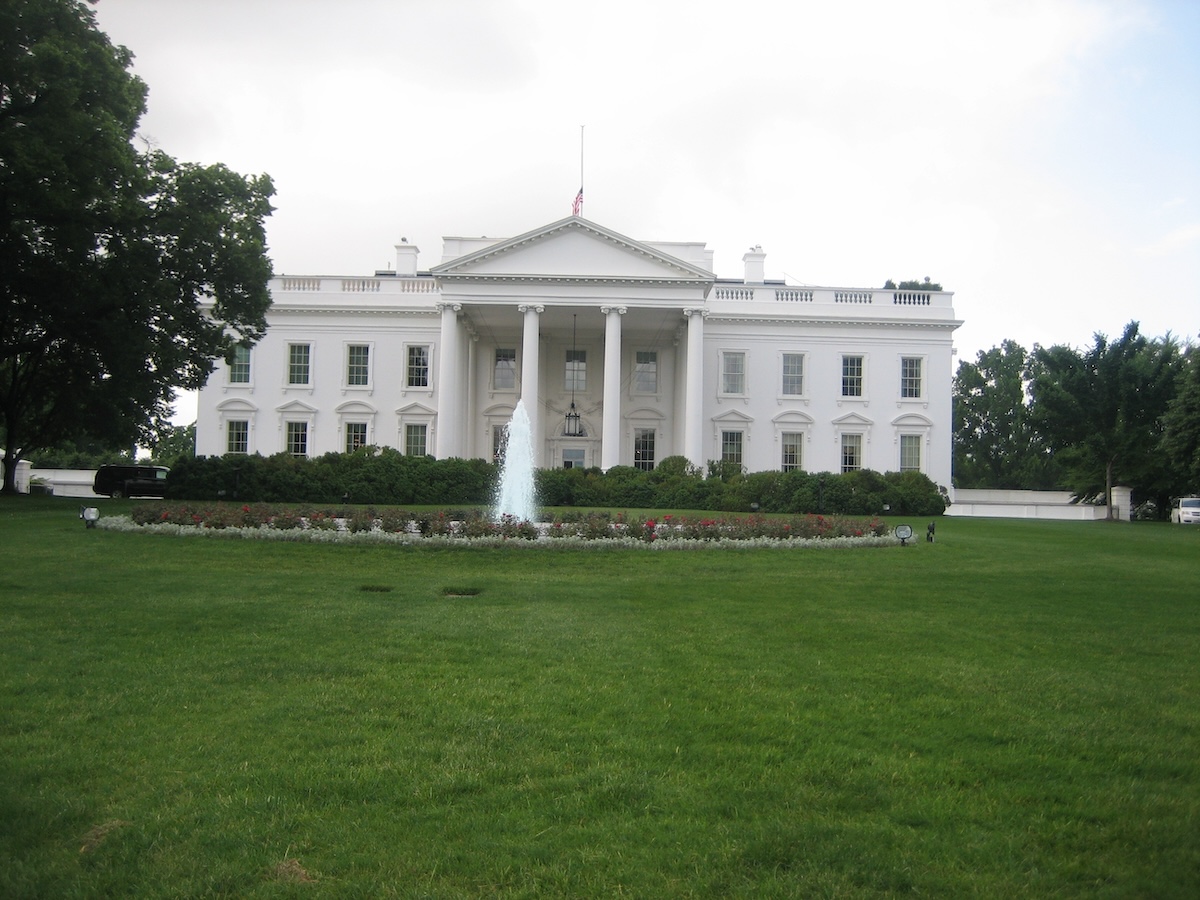Strategic Implications for Business Leaders

Introduction
Can you imagine a world where artificial intelligence (AI) predicts natural disasters, saves countless lives, and assists doctors in diagnosing diseases with unparalleled accuracy? Now, contrast that with a world where AI results in biased decision-making, privacy invasion, and the spread of misinformation. These are not scenes from a sci-fi movie; they’re real-life instances showcasing the dual nature of AI: an instrument for incredible good and, at times, unforeseeable harm.
We stand at a crossroads in the rapidly evolving world of artificial intelligence, particularly generative AI. This technology, capable of generating new content through learned patterns and data, is not just a tool for innovation but also a subject of intense debate and concern. Its impact spans across boundaries, privacy issues, and economic implications, making it a contentious subject in today’s landscape. Like any change, there are both pessimists and optimists.
This article delves into the core of the AI revolution by focusing on President Biden’s Executive Order on the Safe, Secure, and Trustworthy Development and Use of Artificial Intelligence—a directive within the United States that aims to navigate the intricate landscape of generative AI.[1] We will explore how this order is reshaping the ecosystem by striking a balance between harnessing AI’s potential for innovation while addressing its risks to security, privacy, and ethical standards. By the end of this piece, you will have a better understanding where AI regulations are heading and their implications for business.
A Brief Primer
Just in case you’ve missed the generative AI hubbub, it’s essentially a subset of AI that can automatically create new content that parrots the data it was trained on—foundation models (FMs) and large language models (LLMs) power generative AI systems. The fuel for these humongous neural networks are massive volumes of data—that were vacuumed from the internet without regard for privacy or intellectual property (IP) rights.
Figure 1.1: Relationship Between AI and Generative AI

By learning the patterns and structures of language, code, visuals, artwork, and music, LLMs can contextually understand concepts and generate new content, which shares statistical similarities with the original corpus it was trained on. With recent advances, anyone can now effortlessly create a prompt to write words, code, synthesize data, images, music, and video.
Figure 1.2: Generative AI Model Types

For those who may not be familiar with U.S. Executive Orders (EOs), they’re not exactly laws. They are directives issued by the President of the U.S. to manage the federal government’s operations, and they can significantly impact policies and businesses. The EO is a big step for the U.S. since previously, we had an AI Bill of Rights and voluntary agreements, which were a set of non-binding principles.[2],[3] In essence, the AI Bill of Rights and voluntary agreements were a set of guidelines that were largely ignored by just about everyone. If you’re curious about the AI Bill of Rights, see my Medium post, Decoding the AI Bill of Rights.[4]
With the rise of AI, its development and adoption have surpassed regulatory frameworks, resulting in a gap in governance and oversight. Biden’s EO represents a stride towards addressing this void. It establishes guidelines and principles for the development and ethical use of AI, striking a balance between promoting innovation and addressing concerns regarding impacts, security, privacy, and ethical considerations.
The Executive Order
Policymakers are caught between a rock and a hard place. Most of them don’t understand AI, and they’re attempting to regulate a technology that is evolving at breakneck speed with potential widespread global consequences. If they act too slowly, they miss preventing potential hazards, and moving too fast could stifle innovation and lead to unproductive or damaging rules.
Furthermore, the US is unique since we have big players in Silicon Valley who are on both sides of the issue–either calling for regulation or demanding a moratorium on AI development–all with their own agendas. It’s another case of the “haves” and “have-nots”–those building an AI moat want to protect it. And those who don’t, want unfettered access to develop one. Unlike the AI Bill of Rights and the voluntary AI commitments previously agreed to, the EO “will be enforced through the Defense Production Act, a 1950 law that gives the president broad authority to compel U.S. companies to support efforts deemed important for national security.”[5]
Don’t get me wrong, this is a big step for the US. It’s not perfect, but it outlines specific actions and timelines for federal agencies, emphasizing the need for AI to be developed and used safely, securely, and trustworthy.
The order spans the gamut and covers AI safety and security, ethics, privacy protections, consumer protections, clarifying intellectual privacy laws, national security implications, and the responsible and safe use of AI.
Enhancing AI Safety and Security
Key Government Actions
Biden’s EO presents a plan that requires AI technologies to adhere to safety standards and undergo risk assessment processes. The government’s focus is on taking measures to identify and address risks associated with the deployment of AI. The goal is to ensure that these technologies are developed and used in a way that protects human welfare and national security. Some important provisions outlined in the order include:
- The National Institute of Standards (NIST) will be responsible for developing a set of standards and test frameworks, including red-teaming, which will be used to assess the safety and security of AI systems.
- Developers of AI systems will be required to share their safety test results with the government.
- To receive funding, agencies involved in biological agent development will collaborate with the government to establish guidelines preventing the misuse of AI systems for developing weapons.
- The Department of Commerce will work with industry partners to create watermarking technology so that AI-generated content can be easily identified, and individuals will have a mechanism to ensure authentic content and communications.
- The government will up its game on the cybersecurity front to test and fix critical infrastructure, and the military will create guidelines on the ethical use of AI for defense.
Business Implications
In today’s business landscape, it is crucial for leaders to carefully reconsider their company’s AI initiatives, with a focus on safety and security. It is the responsibility of leadership to ensure that AI systems not only demonstrate efficiency and innovation but align with evolving safety standards and regulatory requirements. This may involve investing in risk assessment tools, implementing safety protocols, and maintaining continuous monitoring and compliance with government guidelines.
Business leaders should take an approach to promote considerations and effective governance in AI. CEOs must foster a culture that prioritizes the use of AI within their organizations. Going beyond compliance, businesses should strive to become industry leaders in AI development by integrating ethical considerations into every stage of their AI strategies, from design to deployment and beyond. Currently, most companies barely pay lip service to the importance of AI ethics.
Furthermore, an opportunity exists for innovation and differentiation through prioritizing secure AI practices. By doing companies can gain an advantage while building trust with customers and stakeholders. Trust becomes invaluable in an era where public scrutiny towards AI is increasing along with demands. Embracing these changes can position your company as a frontrunner in AI use, leading to growth and establishing a competitive advantage.
Promoting Ethical AI Development and Use
Key Government Actions
The directive calls for establishing ethical guidelines and principles to govern AI systems, aiming to address critical issues such as bias, discrimination, and privacy. The government’s approach is to ensure that AI technologies are developed and used in a way that respects human rights and democratic values, while also being transparent and accountable. Several provisions in this category include:
- The National Science Foundation (NSF) is directed to form a research consortium and prioritize the development of technology that preserves individual privacy but still allows the data to be used for model training.
- The federal government will investigate how it uses 3rd party data and establish guidelines for federal agencies to understand how effectively they adhere to privacy regulations.
- Guidelines will be provided to landlords, federal benefits programs, and court systems to help prevent and mitigate algorithmic discrimination.
Business Implications
Business leaders face challenges and opportunities with a focus on ethical AI. The challenge lies in aligning AI strategies with fledgling ethical standards. Organizations need to conduct thorough audits of existing AI systems for biases, implement strong privacy protections, and ensure transparency in AI operations. Remember, ethical AI is not only a regulatory requirement, but also a crucial factor in building trust with customers and stakeholders. As a leader, champion the development of technically proficient and ethically responsible AI systems.
Ethical AI enables innovation opportunities. Product leaders can use ethical AI principles to distinguish their products and services. Product managers should consider developing AI solutions that tackle social challenges or improve accessibility and inclusivity. By doing so, they’ll not only meet regulatory expectations but also showcase your company’s dedication to social responsibility, which can set you apart in today’s market.
Establishing an ethical AI culture in your organization is crucial. This means investing in training programs to equip your teams with the knowledge and skills for ethical AI implementation. Additionally, engaging with stakeholders, such as customers, employees, and regulators, is vital to understand their concerns and expectations regarding AI.
Embracing Global AI Leadership
Key Government Actions
Biden’s executive order (EO) promotes innovation and international collaboration in AI. The goal is to maintain US leadership in AI technology while aligning its development with global standards. CEOs can benefit from this opportunity to explore AI research and development and engage in international partnerships to drive innovation. The EO includes:
- Requests the State Department and Chamber of Commerce to expand cross-border agreements and expedite the development of responsible AI standards globally.
Business Implications
Business leaders should actively seek and participate in research and development initiatives aligned with the government’s focus areas in AI. Leaders can invest in in-house R&D projects and form partnerships with academic institutions, research labs, and other companies, including international entities. The government’s emphasis on AI innovation presents potential funding opportunities and incentives for businesses contributing to the advancement of AI technology.
As a business leader, fostering relationships with overseas partners, participating in global AI forums, and aligning your company’s AI practices with international standards are essential steps. This not only enhances your company’s global presence, but also ensures that your AI solutions are robust, ethical, and globally accepted.
Balancing regulation with innovation is crucial. While adhering to regulatory requirements is non-negotiable, it should not stifle innovation. Encourage your teams to think creatively within the regulatory frameworks, using them as a baseline for responsible and ethical innovation. This approach not only ensures compliance but also drives the development of AI solutions that are both innovative and socially responsible.
AI-Related Intellectual Property Challenges
Key Government Actions
The EO marks a big shift in the intellectual property (IP) landscape for AI-derived works. For CEOs and legal teams, this shift should trigger a reevaluation of your company’s approach to AI development, particularly regarding IP management and protection. The order’s focus on AI and inventorship for patentable subject matter, along with additional guidance on AI and IP considerations, underscores the need for businesses to pay attention to this one.
Specifically, the EO requests:
- The US Patent and Trademark Office (USPTO) to define what is allowed and what is not for AI-derived works.
Business Implications
Guidance on AI patents and copyrights for AI-derived IP will set a precedent for years to come.
CEOs should instruct their legal and R&D teams to closely monitor evolving guidelines and criteria for AI-related patents. Leaders need to understand the role of AI in the development process and its impact on inventorship claims. Companies must ensure adequate protection of their AI innovations under new guidelines and, if needed, adjust IP filing strategies to align with updated regulations.
The focus on copyright and AI brings new aspects to how AI-generated content is handled under copyright law. Business leaders need to understand the implications for their content creation processes, especially if they heavily rely on AI. Establishing clear protocols for using AI in content generation is crucial to avoid copyright infringements.
CEOS must prioritize robust IP risk management to combat AI-related IP risks effectively. This includes developing comprehensive IP protection strategies, incorporating legal protections, technological safeguards, and employee training. Aligning all aspects of the company ensures the safeguarding of intellectual assets.
Navigating the New Regulatory and Compliance Framework
The EO’s framework involves an intricate web of roles and responsibilities assigned to various federal agencies, each tasked with enforcing compliance and overseeing the responsible development and use of AI technologies. This framework translates into a new set of legal and regulatory obligations for AI developers, ranging from safety and risk assessments to ethical considerations and data privacy.
As a business leader, navigating this new regulatory terrain requires a proactive and informed approach. The first step is to thoroughly understand the specific compliance requirements for your company’s AI initiatives. Staying abreast of the latest guidelines and standards set forth by relevant agencies is a good start. It’s crucial to assess how these regulations impact your current and future AI projects and to implement necessary changes to not only ensure compliance, but leadership and differentiation.
The upcoming regulatory shift highlights the need for legal expertise in AI development. Strengthening your legal team with professionals specialized in AI and technology law is recommended. This team will be crucial in interpreting complex regulations, guiding your company through compliance processes, and managing legal risks related to AI development and deployment. They can also facilitate effective communication with regulatory bodies, ensuring that your company’s AI practices align with legal expectations and industry standards.
Leaders must integrate compliance into the organizational culture by embedding regulatory compliance at every stage of the AI development lifecycle, from conception to deployment. It requires training teams to understand and follow regulatory requirements, and establish internal processes for continuous monitoring and reporting. By doing so, you ensure compliance and promote accountability and transparency within your organization.
What’s Missing from the EO?
Well, there are a host of issues, but two biggies are related to the IP used to train FMs and private-sector regulation.
With the ongoing discussion surrounding IP protection and data privacy, it raises the following question: why isn’t the government holding companies accountable for profiting billions while violating your privacy and utilizing your data without discretion? This blatant disregard for IP rights perpetuates the divide between the “haves” and “have-nots.” Is it because these companies possess excessive power and influence that the government fails to take action? It’s quite possible.
Another aspect is private-sector regulation. The government should establish clear policies and guidelines for creating, deploying, and using AI technologies. However, it might be even more crucial to have comprehensive guidelines and consequences for companies that deploy AI on a large scale. Nevertheless, this may be a lot to address in the initial stages of AI regulation.
Summary
Regulatory Shift and Strategic Reassessment
The EO on AI represents a significant shift in the regulatory landscape, moving from a framework of voluntary guidelines to enforceable directives. This change is crucial for your company as it necessitates a strategic reassessment of how AI is integrated and managed within your business operations. The focus is now on aligning with new safety, security, and ethics standards in AI development and use. For business leaders, it’s imperative to understand that this is not just a compliance issue but an opportunity to redefine your company’s approach to AI, ensuring that it is both innovative and responsible. This shift presents a chance to establish your company as a leader in ethical AI practices, which could be a significant differentiator in the market.
Balancing Compliance with Innovation
The EO highlights the dual challenge of adhering to stricter regulations while continuing to innovate. For your company, this means navigating the complexities of implementing ethical AI development, ensuring privacy protections, and managing intellectual property in new ways. This transition period is an opportunity to audit existing AI systems for compliance, biases, and ethical alignment. However, it’s also a moment to think beyond mere compliance. How can your company use these new standards as a springboard for innovation? There’s potential here to develop AI solutions that meet regulatory requirements and address broader social challenges, enhancing your brand’s value and trust in the eyes of consumers and stakeholders.
Global Leadership and Intellectual Property Focus
The U.S. wants to maintain its global leadership in AI, encouraging international collaboration and setting the stage for your company to explore new avenues in AI research and development. This global perspective is crucial for staying ahead in a competitive market.
The renewed focus on AI-related intellectual property issues requires a proactive approach to managing and protecting your company’s intellectual assets. This area is ripe for strategic innovation – how can your company leverage its IP in AI to create new value and sustain competitive advantage? As AI continues to evolve, so too should your strategies around IP management, ensuring that your company remains at the forefront of this technological revolution.
Food for Thought
As you navigate these changes, consider how your company can turn these regulatory adjustments into strategic advantages. How can you leverage ethical AI practices to enhance your brand’s reputation? In what ways can international collaborations in AI research and development open new doors for your business? And finally, how can a robust approach to AI-related intellectual property not only protect but also enhance your company’s assets and market position? These are critical considerations as you lead your company into the next phase of AI revolution.
If you enjoyed this article, please like the article, highlight interesting sections, and share comments. Consider following me on Medium and LinkedIn.
If you’re interested in this topic, consider TinyTechGuides’ latest report, The CIO’s Guide to Adopting Generative AI: Five Keys to Success or Artificial Intelligence: An Executive Guide to Make AI Work for Your Business.
[1] “Executive Order on the Safe, Secure, and Trustworthy Development and Use of Artificial Intelligence.” 2023. The White House. October 30, 2023. https://www.whitehouse.gov/briefing-room/presidential-actions/2023/10/30/executive-order-on-the-safe-secure-and-trustworthy-development-and-use-of-artificial-intelligence/.
[2] “Blueprint for an AI Bill of Rights.” The White House. 2022. https://www.whitehouse.gov/ostp/ai-bill-of-rights/.
[3] “FACT SHEET: Biden-Harris Administration Secures Voluntary Commitments from Leading Artificial Intelligence Companies to Manage the Risks Posed by AI.” 2023. The White House. July 21, 2023. https://www.whitehouse.gov/briefing-room/statements-releases/2023/07/21/fact-sheet-biden-harris-administration-secures-voluntary-commitments-from-leading-artificial-intelligence-companies-to-manage-the-risks-posed-by-ai/.
[4] Sweenor, David. 2023. “Decoding the AI Bill of Rights.” Medium. October 21, 2023. https://medium.com/@davidsweenor/decoding-the-ai-bill-of-rights-e5213a609abe.
[5] Roose, Kevin. 2023. “With Executive Order, White House Tries to Balance AI’s Potential and Peril.” The New York Times, October 31, 2023, sec. Technology. https://www.nytimes.com/2023/10/31/technology/executive-order-artificial-intelligence-regulation.html.



